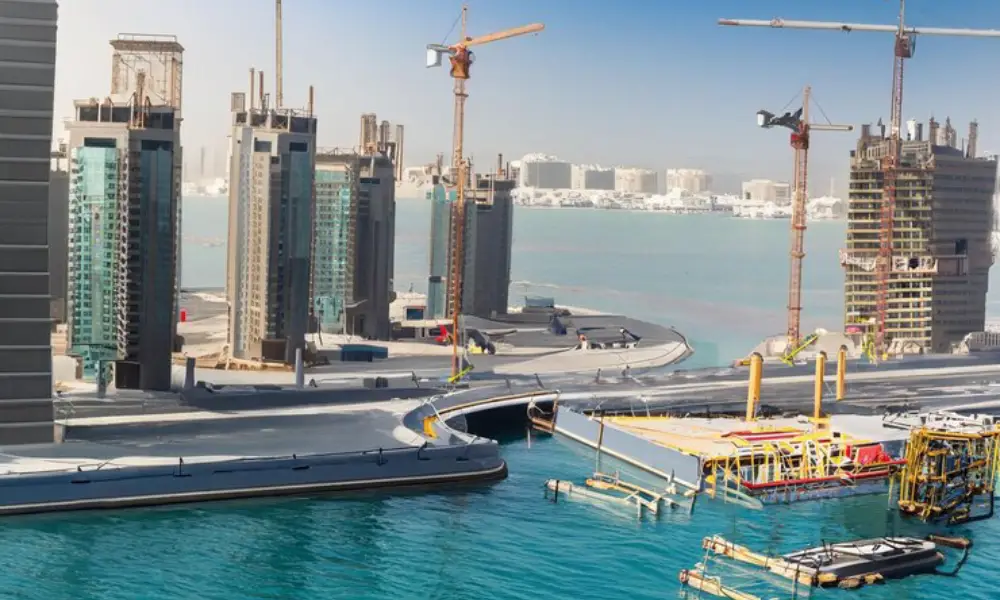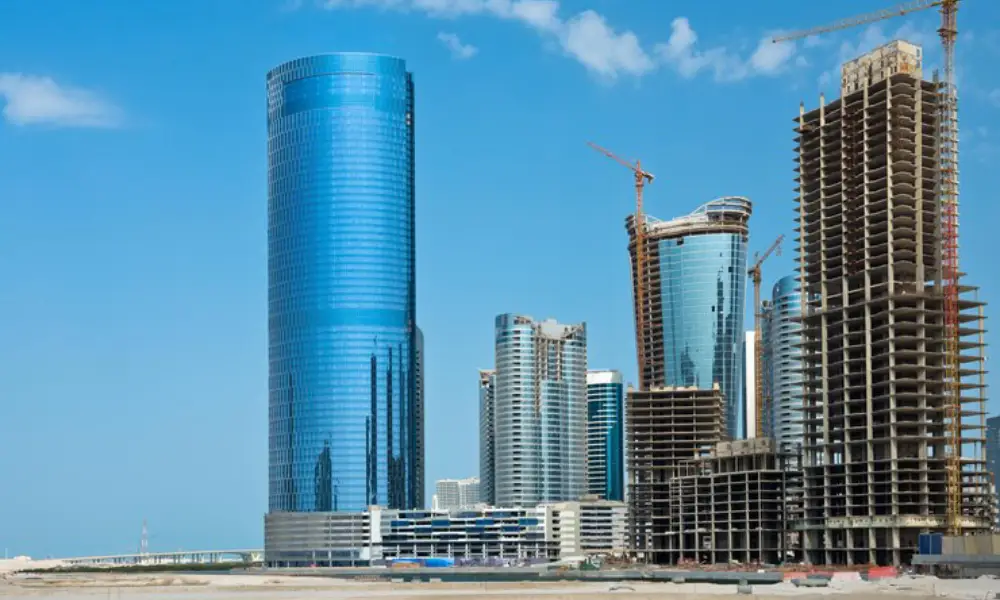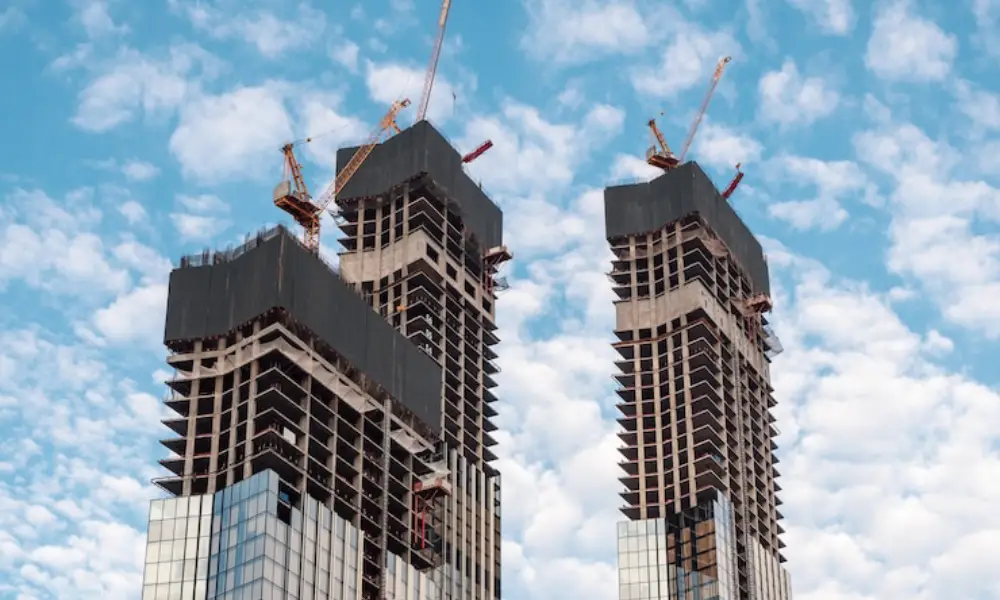
Construction Industry in UAE
Over the past few decades, the United Arab Emirates has become a pivotal point in urban development and contemporary architecture—from iconic skyscrapers to large-scale coastal and infrastructural projects. However, the significance of the UAE goes far beyond visual spectacle: the country is transforming into a laboratory that helps shape the future of the construction industry in the region—particularly in innovation, sustainability, and urban management. In this article, I present a precise and pragmatic outlook on the key factors defining the future of the construction industry in the UAE, covering policymaking, technologies, opportunities, risks, and strategic recommendations for market players.
1. Why does the future of the construction industry in the UAE matter regionally and globally?
The UAE simultaneously combines a set of features that distinguish it from many regional markets: relative economic stability, advanced financial infrastructure, attractive laws for foreign investment, and a long-term vision for urban development. This combination has made the UAE not only a destination for luxury and showcase projects but also a center of innovation in how urban and technological projects are executed. Understanding the future of this industry enables construction managers, investors, designers, and policymakers to plan more precisely and capitalize on emerging trends.
2. The Current Status of the Construction Industry: Structural Transformations and the Post-COVID Market
After the COVID-19 pandemic, the construction industry in the UAE entered a new and transformative phase. The temporary slowdown of projects and restrictions from lockdowns forced many developers and contractors to rethink their business models and construction strategies. During this period, project speed, resource efficiency, and cost management became more critical than ever, and the use of digital technologies and project management tools turned into a necessity.
The post-pandemic market revealed that customer demand had also changed: residential and commercial spaces with comprehensive amenities, smart buildings, and sustainable designs have gained greater attention. These changes have not only influenced design and execution methods but have also reshaped investment paths and urban development priorities.
Simultaneously, these transformations created a unique opportunity for innovation and creativity. By leveraging modern technologies, companies and developers are now delivering projects that are faster, more resilient, and more cost-effective. The post-pandemic construction market in the UAE marks the beginning of a new era—one that merges productivity, innovation, and evolving customer needs to create a bright future for the industry.
3. Government Policies and Programs: Direction and Macro Frameworks
The UAE government plays a vital role in guiding and developing the construction industry through comprehensive policies and strategic programs. Direct investment in national and infrastructure projects, financial incentives for the private sector, and facilitation of international cooperation are among the most significant measures driving market dynamism.
These policies ensure that projects are designed and executed not only based on current needs but also in alignment with the long-term vision for sustainable urban development. Government planning—focused on smart cities, green buildings, and technology-driven infrastructure—paves the way for the integration of innovation and advanced technologies.
Furthermore, the government’s macro frameworks prioritize quality and safety standards and enhance investor confidence through process transparency. Consequently, these policies not only accelerate economic and industrial growth but also create a stable and coherent foundation for the sustainable development of the construction industry in the UAE, providing a clear and predictable path for market participants.
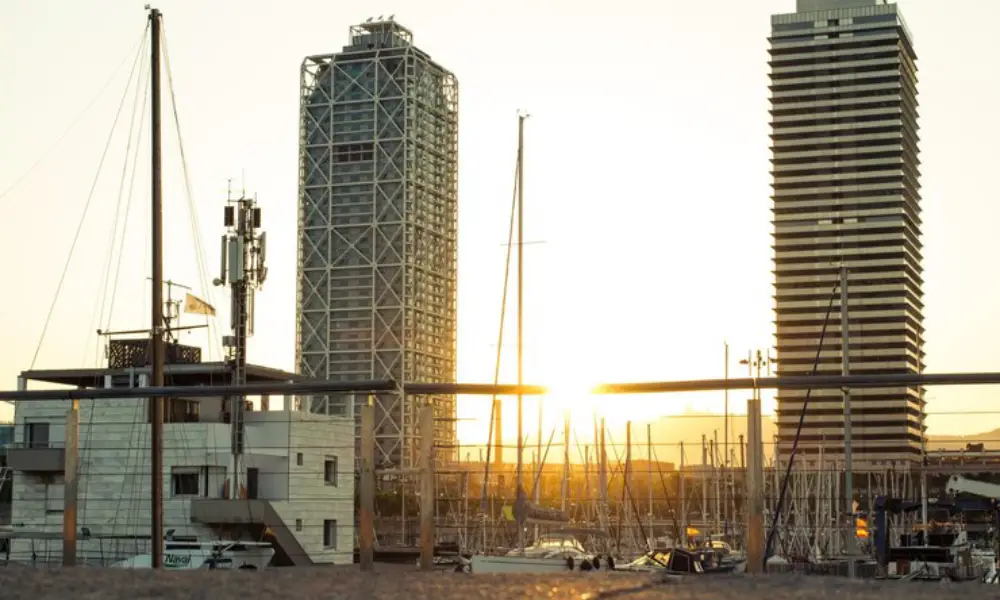
4. Technology and Innovation: From BIM to 3D Printing and Robotics
The adoption of modern technologies in construction enhances execution speed and accuracy while reducing hidden costs. Tools such as Building Information Modeling (BIM) improve coordination among architecture, structure, and MEP teams, preventing design errors during implementation. Artificial intelligence and analytics enable project managers to forecast delays and optimize resource allocation. Moreover:
3D Concrete Printing and Modular Construction: In projects requiring rapid execution or complex designs, 3D printing can significantly reduce construction
time and material waste.
Robotics and Automation: Robots are employed in repetitive tasks such as tiling, grouting, or prefab installation, ensuring uniform quality and faster delivery.
Internet of Things (IoT) and Smart Buildings: Sensors, energy management systems, and predictive maintenance tools enhance occupant experience and reduce operational costs.
Although these technologies require initial investment, they offer substantial long-term returns. Contractors and developers that adopt and integrate these tools early gain a significant competitive advantage.
5. Sustainability and the Circular Economy: The Imperative of a New Era
Climate concerns and global pressure to reduce emissions have made sustainability an inseparable part of modern projects. In the UAE—given its hot climate and high energy demand for cooling—low-consumption designs and the use of renewable energy (such as solar panels and thermal management systems) have become increasingly critical. Key aspects of this transition include:
Climatic Design: façade optimization, shading systems, effective insulation, and natural ventilation to reduce reliance on mechanical cooling.
Low-Embodied-Carbon Materials: selecting materials with lower carbon footprints and higher recyclability.
Water Management and Recycling: implementing greywater reuse, rainwater harvesting, and efficient landscape irrigation systems.
Circular Economy Strategies: planning for material separation and recycling at the end of a building’s lifecycle, and designing for component disassembly and reuse.
Projects adhering to these principles not only comply with international standards but also gain market advantage through lower operational costs and stronger appeal to sustainable investors.
6. Investment Opportunities and High-Growth Sectors
Driven by stable economic growth and rapid urban infrastructure expansion, the UAE’s construction market offers exceptional investment opportunities for both domestic and international players. High-demand sectors such as luxury residential, mixed-use developments, infrastructure projects, and smart cities have demonstrated strong growth and profitability. These areas are attractive not only due to market demand but also because of government focus on sustainability and advanced technologies.
Additionally, green and energy-efficient building projects are expanding rapidly, drawing increasing attention from investors. By integrating modern technology, innovative materials, and intelligent design, new projects deliver both high quality and operational savings—enhancing overall economic value.
International collaborations and knowledge transfer also represent key opportunities for investors. Companies leveraging global experience and advanced technologies can execute world-class projects and strengthen their position in the UAE market. In summary, the combination of economic growth, government support, strong market demand, and technological innovation creates a bright and profitable future for investment in the country’s construction sector.
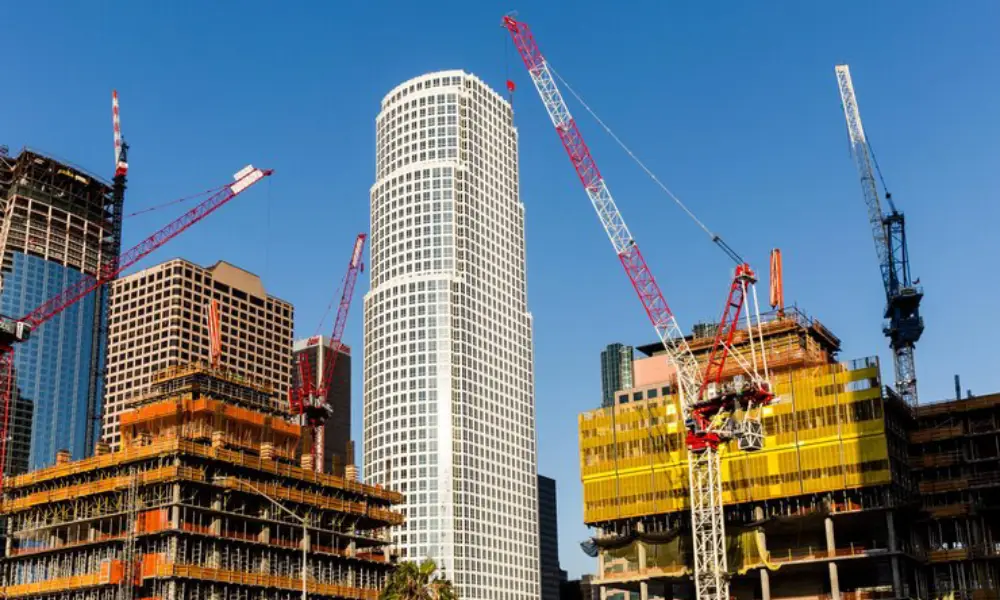
7. Supply Chain and Raw Materials: Risks and Solutions
While the UAE’s construction sector grows rapidly, project success largely depends on efficient supply chain management and access to high-quality raw materials. Global price fluctuations, import restrictions, and logistical delays pose significant risks, potentially increasing costs or causing project delays. In such cases, accurate planning and diversification of supply sources are essential to mitigating these risks.
Innovative solutions are increasingly being applied, including long-term contracts with trusted suppliers, digital technologies for demand forecasting and inventory control, and reliance on local or sustainable alternatives. Furthermore, the development of strategic storage facilities and advanced logistics networks helps ensure continuous, high-quality project execution.
Effective supply chain and materials management not only minimize operational risks but also enhance project quality and client satisfaction. Ultimately, companies that intelligently optimize their supply chains through flexibility and technology will significantly strengthen their competitive position in the UAE market.
8. Workforce and Skills: Shortages, Training, and Human Capital Development
A major long-term challenge in the industry is the shortage of skilled professionals—particularly in modern technologies, BIM, data management, and smart maintenance. Addressing this challenge requires a multi-faceted approach:
Corporate and governmental investment in specialized training and professional certification programs;
Partnership programs between universities, technical institutes, and construction firms to develop workforce skills aligned with market needs;
Turning projects into apprenticeship opportunities for technical knowledge transfer from foreign to local workers;
Adoption of automation and prefabrication technologies to reduce dependence on labor-intensive methods.
9. Regulations, Standards, and Governance: Steering the Market Toward Quality and Safety
Standardization and sound governance are key drivers of quality and safety in construction. The UAE enforces strict regulations regarding materials, design, safety, and energy efficiency to ensure that buildings are not only modern and aesthetically pleasing but also durable and sustainable. These regulations foster healthy competition among developers and elevate the overall standard of construction services and products. Transparent governance and continuous project monitoring further reduce financial and technical risks, building investor and customer confidence across the sector.
10. International Cooperation and Knowledge Transfer
International collaboration and knowledge exchange are vital to advancing the UAE’s construction industry. Major companies and projects leverage global expertise, cutting-edge technologies, and best management practices to enhance quality and efficiency. The participation of international experts and consultants, specialized training programs, and research partnerships facilitate direct transfer of global knowledge into local markets. This approach not only strengthens professional capacity among the local workforce but also enhances the UAE’s global competitiveness in the construction sector.
11. Climate, Water, and Energy Challenges: Designing for Hot and Arid Conditions
The UAE’s hot, arid climate presents one of the main challenges for the construction sector. Building and infrastructure design must adapt to extreme temperatures, water scarcity, and intense sunlight. Incorporating advanced cooling systems, thermal insulation, heat-resistant materials, and green building designs helps reduce energy consumption and improve occupant comfort. Additionally, efficient water management and energy optimization enhance environmental sustainability while reducing operational costs. These challenges simultaneously create opportunities for innovation and the development of creative design and construction solutions.
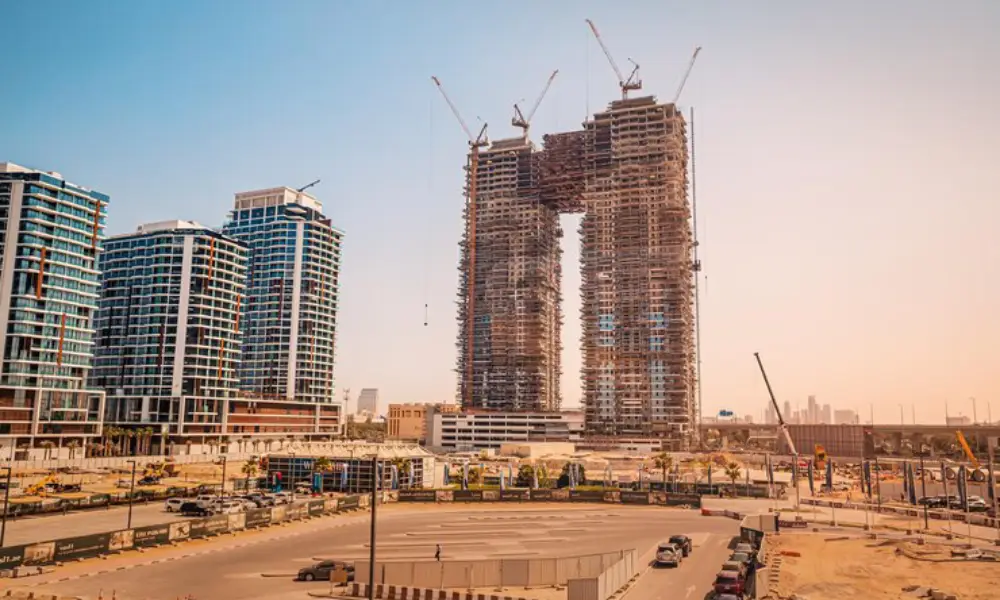
12. Ten-Year Outlook: Smart, Sustainable, and Resilient Cities
The coming decade promises profound transformation and unprecedented opportunities for the UAE construction industry. Urban development is moving toward smart, sustainable, and adaptable cities that integrate advanced technologies, clean energy, and optimized design to provide a modern, comfortable living experience. This evolution represents a fusion of innovation, resource management, and long-term planning that positions the UAE as a global leader in the architecture of the future.
Environmental sustainability and energy efficiency are central to this ten-year vision. Buildings and infrastructure will be designed to minimize water and energy consumption, incorporate durable green materials, and reduce climate impact. Design flexibility will also allow projects to adapt to changing demographic and technological needs, ensuring longer lifespans.
Moreover, future-oriented cities in the UAE will employ digital and IoT-based systems for real-time management of transportation, security, energy, and urban services. This not only enhances residents’ quality of life but also increases efficiency, reduces operational costs, and attracts international investment.
In essence, the ten-year outlook for the UAE’s construction industry embodies a balance of intelligence, sustainability, and resilience—simultaneously addressing economic, environmental, and social dimensions. Projects that successfully integrate these principles will thrive in the domestic market while reinforcing the UAE’s global standing as a model for the cities of the future.
13. Strategic Recommendations for Industry Stakeholders
For contractors, developers, designers, and investors operating in or entering the UAE market, the following actionable recommendations are essential:
Embrace technology and digitalization: Integrate BIM, analytics, and IoT across operations.
Prioritize sustainability: Make environmental responsibility a key criterion from design to operation.
Diversify business models: Offer maintenance, energy management, and post-sale solutions for new revenue streams.
Develop domestic supply chains: Collaborate with local manufacturers to minimize logistical risks and costs.
Invest in human capital: Launch training and partnership programs to develop essential technical skills.
Maintain contractual flexibility: Include mechanisms to manage material price fluctuations and project delays, especially in large-scale developments.
14. Integrating Innovation, Sustainability, and Governance for a Successful Future
The future of the construction industry in the UAE represents a transition toward cities where technology, sustainability, and smart management take center stage. The UAE has the potential to become a model for the entire region; however, this path requires continuous investment in technology, education, standardization, and international collaboration. Those industry players capable of simultaneously embracing innovation, adhering to sustainability standards, and aligning with governance frameworks will have the greatest potential for success and growth in this dynamic regional market.
